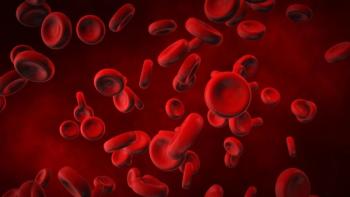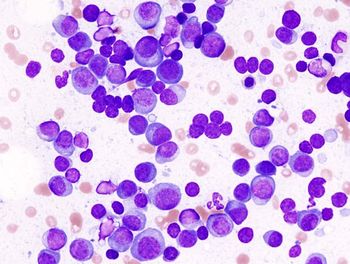
- Oncology Vol 28 No 1S
- Volume 28
- Issue 1S
(P010) Clinical Outcomes in Patients With Early-Stage Uterine Clear-Cell Carcinoma
There is a paucity of data on the clinical outcomes in women with uterine clear-cell carcinoma. The purpose of this study is to report single-institution clinical outcomes in patients with early-stage uterine clear-cell carcinoma.
T. Jonathan Yang, MD, Neil B. Desai, MD, Marisa A. Kollmeier, MD, Nadeem R. Abu-Rustum, MD, William P. Tew, MD, Elizabeth Jewell, MD, Richard R. Barakat, MD, Kaled M. Alektiar, MD; Memorial Sloan-Kettering Cancer Center
Purpose and Objectives: There is a paucity of data on the clinical outcomes in women with uterine clear-cell carcinoma. The purpose of this study is to report single-institution clinical outcomes in patients with early-stage uterine clear-cell carcinoma.
Materials and Methods: From April 1992 to September 2010, 46 women with stage I–II uterine clear-cell carcinoma underwent hysterectomy and salpingo-oophorectomy. Pelvic lymph node sampling was performed in 36 (78.3%) patients (median 16 nodes), para-aortic node sampling was performed in 36 (78.3%) patients (median 5 nodes), and pelvic washing was performed in 40 (87.0%) patients (none positive). Thirty-eight (82.6%) patients had stage IA disease, 4 (8.7%) patients had stage IB disease, and 4 (8.7%) patients had stage II disease. Of the 46 patients, 37 (80.4%) received adjuvant radiation therapy (RT). The form of RT was intravaginal RT in 31 (67.4%) patients to a median dose of 21 Gy, pelvic RT in 1 (2.2%) patient to 50.4 Gy, and the combination of intravaginal RT (median dose 15 Gy) and pelvic RT (median dose 45 Gy) in 5 (10.9%) patients. Adjuvant chemotherapy was given to 13 (28.3%) patients, mainly carboplatin/paclitaxel to a median of 6 cycles. Kaplan-Meier estimate was used to assess overall survival (OS) and disease-free survival (DFS).
Results: The median follow-up was 63 months. The 5-year vaginal recurrence rate was 6.4% (95% confidence interval [CI], 0%–14.6%), and the pelvic recurrence rate was 6.4% (95% CI, 0%–14.6%). There were no isolated vaginal or pelvic recurrences. The 5-year rates of para-aortic and distant recurrence were 4.7% (95% CI, 0%–11.3%) and 9.7% (95% CI, 1.0%–18.9%), respectively. The site of distant relapse was lung in four (8.7%) patients, peritoneum in three (6.5%) patients, thoracic lymphadenopathy in one (2.2%) patient, liver in one (2.2%) patient, and bone in one (2.2%) patient. The 5-year DFS rate was 85.3% (95% CI, 74.1%–96.5%), and the OS rate was 90.3% (95% CI, 81.1%–99.5%). In the subset of patients who received adjuvant chemotherapy, the 5-year rate of distant relapse was 7.7% (95% CI, 0%–22.5%), compared with 18.5% (95% CI, 3.3%–33.7%) in patients who did not receive chemotherapy.
Conclusions: With a median follow-up of 63 months, we observed reasonable disease control and survival at 5 years in 46 women with early-stage uterine clear-cell carcinoma. The lack of isolated vaginal/pelvic recurrence observed in this study seems to justify the growing interest in utilizing systemic therapy in early-stage clear-cell carcinoma of the uterus.
Articles in this issue
Newsletter
Stay up to date on recent advances in the multidisciplinary approach to cancer.

















































































